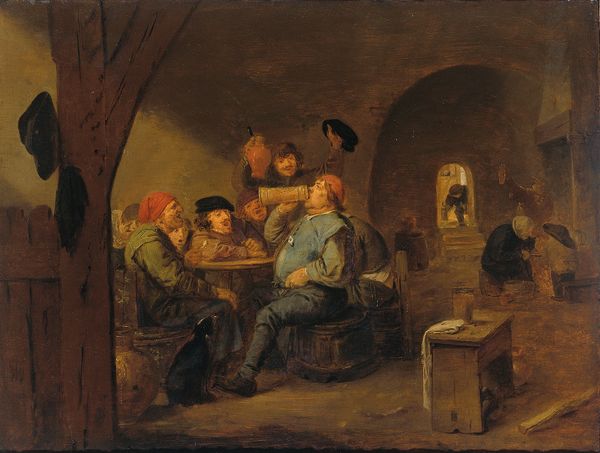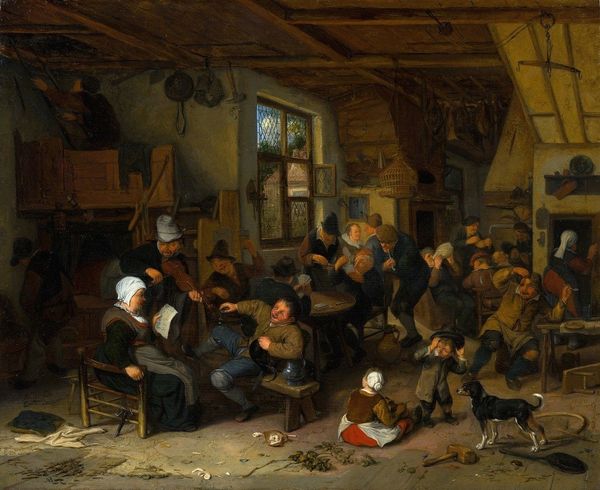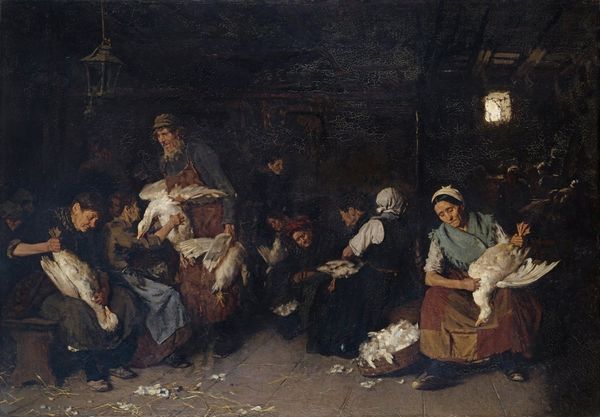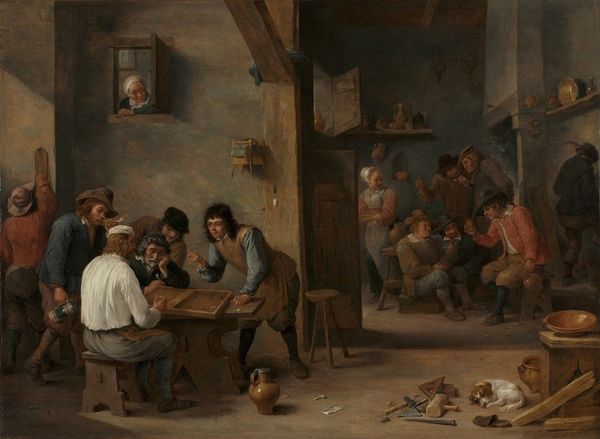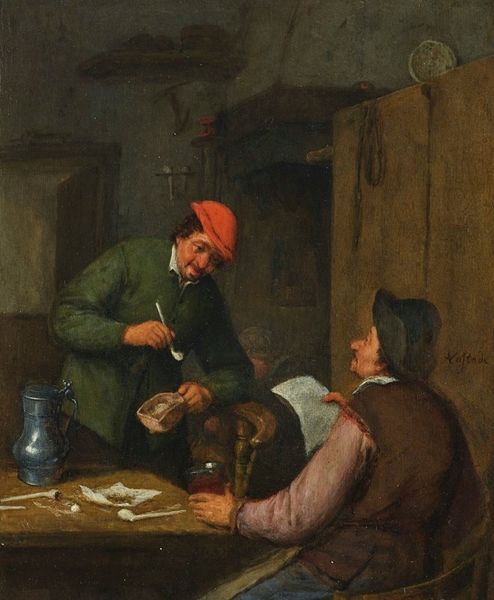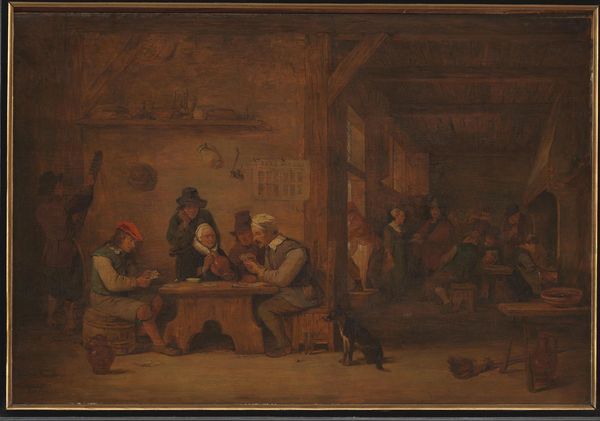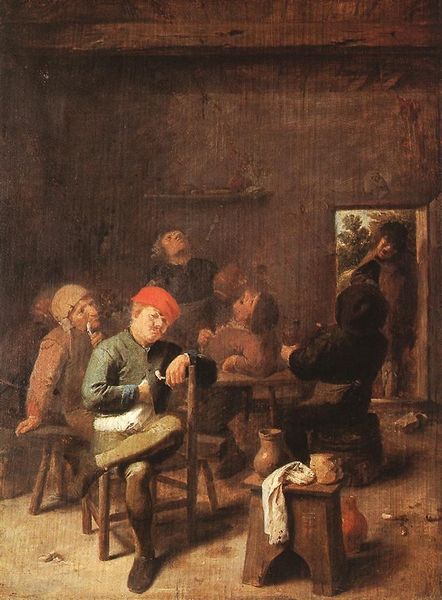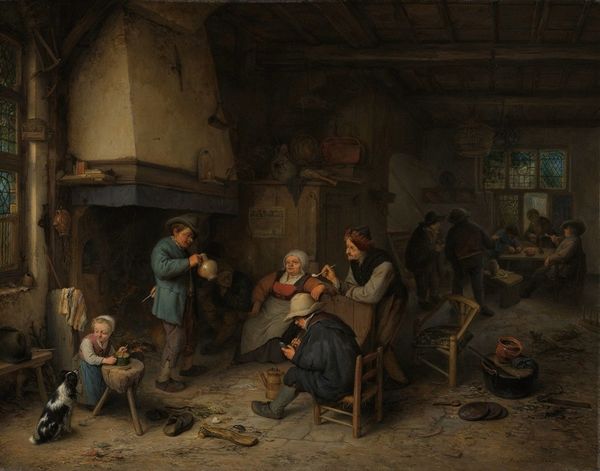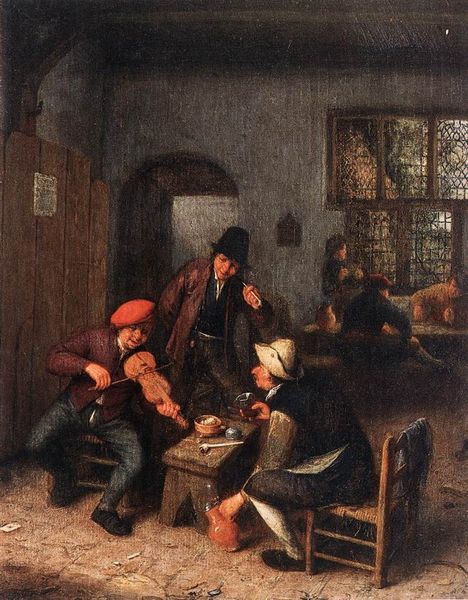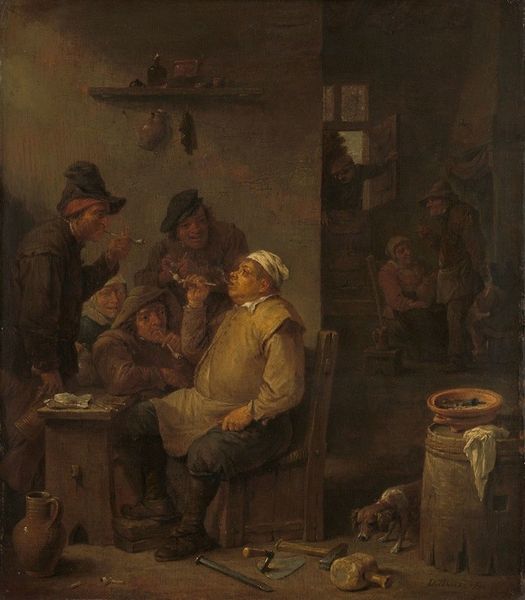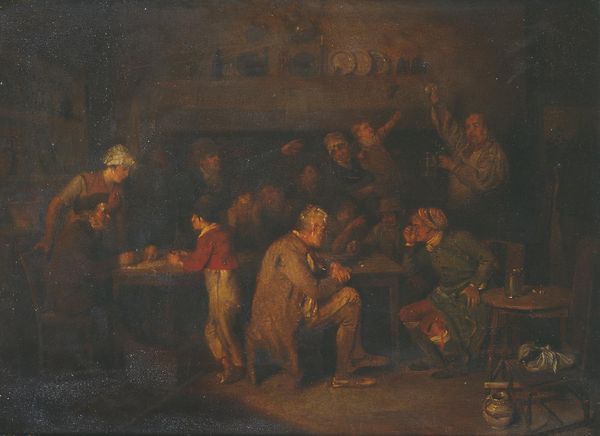
oil-paint
#
baroque
#
dutch-golden-age
#
oil-paint
#
figuration
#
oil painting
#
genre-painting
#
realism
Dimensions: 34 x 37 cm
Copyright: Public domain
Curator: Here we have Adriaen Brouwer’s "The Schlachtfest" from 1635, rendered in oil. A chaotic, crowded scene. What are your initial thoughts? Editor: A drowsy intimacy fills the picture plane; there is a diagonal thrust imparted by the barrel upon which the drunken figure rests, but overall, the colour and tight composition conveys to me a stifling, claustrophobic feeling. Curator: That certainly resonates. Brouwer, deeply enmeshed in the social fabric of his time, frequently depicted scenes of everyday life, capturing the ambiance of taverns and the common folk's festivities. This Schlachtfest—or slaughter feast—is rife with revelry, excess, and perhaps even a critique of overindulgence. Editor: The brushwork contributes much here: it is loose and gestural. This textural quality adds to the raw, unidealized presentation of these figures. Their faces, especially, show such distinct character, hinting at hardship and merriment in equal measure. Curator: Exactly, the historicity reveals the societal context shaping such bacchanals. The Dutch Golden Age saw rising prosperity and shifting cultural values. Festivals provided outlets but also invited social commentary. Brouwer uses figuration to question prevailing customs regarding class and consumption. Editor: I see how the formal dynamism, like the tension between the slumped figure and upright revelers, generates its particular expressive character. What seems a scene of drunken repose bristles with formal relationships; it is charged! Curator: Consider also the function of such depictions within the evolving art market. Genre scenes gained popularity, catering to a bourgeoisie eager to see themselves reflected—sometimes flatteringly, sometimes not. Brouwer tapped into this desire, even as he potentially challenged their values. Editor: An artist's position is always fraught, enmeshed as it is within wider social tensions. Reflecting on this piece reminds me of the many ambiguities that surface when we attempt to historicize, or aestheticize, any era. Curator: Precisely! Looking at "The Schlachtfest" and its structure has provided, for me, fresh historical insights today! Editor: Agreed! What I thought might be a scene of drunken debauchery is much more profound once we understand Brouwer’s technical innovations alongside the sociocultural moment which created this artwork.
Comments
No comments
Be the first to comment and join the conversation on the ultimate creative platform.
